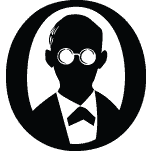First activity I designed for the festival was a Nang Talong shadow puppet workshop at the V&A Museum of Childhood. During my placement in the museum, I donated a set of Thai Nang Talong puppets to the museum's learning team. As we acquired funding from English National Heritage, I then proposed a family workshop based on the story of these puppets at the museum. I created templates which participants could chose and make/decorate their own shadow puppets. They could also put on a little performance on the screen accompanied by the Thai traditional shadow theatre soundtrack. The event took place on the 25th October and went really well, with over 200 people taking part. You can also watch a little video of me explaining my personal relationship with the puppets, relating to my late grandpa.
Second event was a talk at SOAS about my heritage. I discussed my passion for shadow puppets and Thai spiritual practice due to my great grandfather who was a heroic shaman. The evening marked the launch of online archive, Thai Burmese Charms. It provides a fascinating snapshot of the use of charms in the Thai and Burmese communities in London. You can see my own clip from the archive here
Lastly, on the 2nd of November, the festival finished with a beautiful finale event at the Proud Archivist. I was commissioned to create a Kratong making workshop, linking to the floating lantern ritual during the festival of lights. As this year also marks the 100th anniversary of the World War 1, the kratongs were also used to remember the Southeast Asian soldiers who took part in the war. As we couldn't get permission to float the kratong on the river, I decided to ask the participants to instead write down what they want to 'let go' with their kratong. During a performance, I selected a few of these and read them out. Some were funny, some were very sad, but they were all brilliant. For me, it proved the fact that, art is always more powerful if you let it in the hands of the people. I was very touched.




Apart from my own work, the highlight of the festival for me was to see the Khon masters from Thailand performing the traditional Nang Yai, or the grand shadow puppets. The masters dont usually perform unless it's a grand ceremony in Thailand, so having them over in London (thanks to Tourism Authority of Thailand) and having the chance to witness their amazing ability was such a priviledge. Each and every moment were on point. The beauty and grace of their performance really drove me to tears. Overall, it was a very meanngful series of event this year at SEA Art Fest. Although, it might be small compare to other arts festival, it was a great start for SEA arts to be acknowledged and get the recognition it deserved here in UK.
















